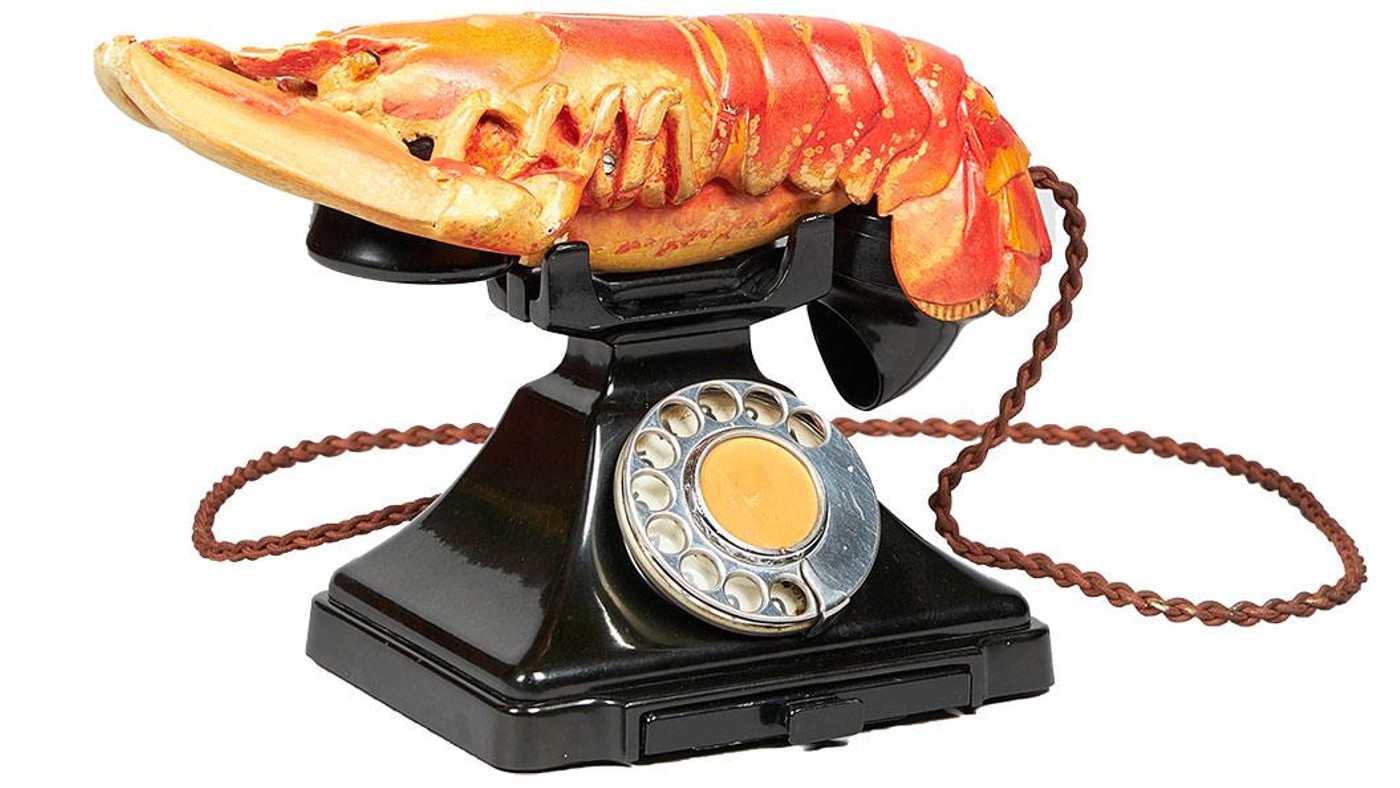Objects of Desire: Surrealism and Design – exhibition review
This tremendously enjoyable exhibition explores how surrealism has marked everyday design

Surrealism was a movement that emphasised “the fantastic and the absurd”, said Aisling O’Leary in The Daily Telegraph. Starting in the 1920s, its artists created “Freudian dreamscapes” that seemingly escaped all reason, but sought to make us see the world in a different way.
We know the movement mainly from paintings and films, but as this “fascinating” new exhibition shows, its practitioners were also influential on the world of design. The show brings together examples of furniture, fashion, interiors and architecture that sprang from the movement or owe a debt to it, along with some classic works of art, to explore how surrealism has marked everyday design – and continues to make its influence felt to this day. Taking in everything from Salvador Dalí paintings to Elsa Schiaparelli dresses to fashion photos by Tim Walker, it is a ride through a century of weirdness which presents “unexpected juxtapositions at every turn”.
This is an “orgy of bad taste”, said Jonathan Jones in The Guardian. Among the first things we see are two of the most immediately recognisable works of surrealist art: Dalí’s Lobster Telephone and the sofa he designed in the shape of actress Mae West’s lips, which we are invited to look at not solely as “outrageous sculptures”, but as “actual pieces of furniture”.
The Week
Escape your echo chamber. Get the facts behind the news, plus analysis from multiple perspectives.

Sign up for The Week's Free Newsletters
From our morning news briefing to a weekly Good News Newsletter, get the best of The Week delivered directly to your inbox.
From our morning news briefing to a weekly Good News Newsletter, get the best of The Week delivered directly to your inbox.
Other surrealist masterpieces get the same treatment: we see Man Ray’s iron studded with nails, “an attack on domestic chores”; and Marcel Duchamp’s 1914 “readymade” of a spiky metal bottle rack – a repurposing of an existing design object as art. It’s all delightfully strange. Less successful, however, are examples of contemporary surrealist-influenced design. Seeing Galliano fashion accessories and Björk videos next to these “jewels of surrealist intoxication” just proves that “surrealism, tragically, is dead”. It was an “extreme and extraordinary” movement, whereas the later examples are merely playful.
If the original surrealist exhibits we see are at times “almost too familiar”, the newer ones are “too diverse”, said Edwin Heathcote in the Financial Times. The parameters of the show allow for almost anything to be described as “surreal”: the term has become “a catch-all” for the strange and unsettling. Nevertheless, it’s a tremendously “enjoyable” exhibition.
Perhaps the most intriguing section covers the lesser-explored phenomenon of surrealism in Africa: a clip from Djibril Diop Mambéty’s 1973 film Touki Bouki is “a magical reflection on the strangeness of migration”, while a bizarre winged bodysuit designed by Yasmina Atta is probably best described as “steampunk juju”. Surrealism may long since have lost its subversiveness – but as the show proves, it can still be a lot of fun.
The Design Museum, London W8 (020-3862 5900, designmuseum.org). Until 19 February
A free daily email with the biggest news stories of the day – and the best features from TheWeek.com
-
 US citizens are carrying passports amid ICE fears
US citizens are carrying passports amid ICE fearsThe Explainer ‘You do what you have to do to avoid problems,’ one person told The Guardian
-
 All roads to Ukraine-Russia peace run through Donetsk
All roads to Ukraine-Russia peace run through DonetskIN THE SPOTLIGHT Volodymyr Zelenskyy is floating a major concession on one of the thorniest issues in the complex negotiations between Ukraine and Russia
-
 Why is Trump killing off clean energy?
Why is Trump killing off clean energy?Today's Big Question The president halts offshore wind farm construction
-
 Nine best TV shows of the year
Nine best TV shows of the yearThe Week Recommends From Adolescence to Amandaland
-
 Winter holidays in the snow and sun
Winter holidays in the snow and sunThe Week Recommends Escape the dark, cold days with the perfect getaway
-
 The best homes of the year
The best homes of the yearFeature Featuring a former helicopter engine repair workshop in Washington, D.C. and high-rise living in San Francisco
-
 Critics’ choice: The year’s top 10 movies
Critics’ choice: The year’s top 10 moviesFeature ‘One Battle After Another’ and ‘It Was Just an Accident’ stand out
-
 A luxury walking tour in Western Australia
A luxury walking tour in Western AustraliaThe Week Recommends Walk through an ‘ancient forest’ and listen to the ‘gentle hushing’ of the upper canopy
-
 Joanna Trollope: novelist who had a No. 1 bestseller with The Rector’s Wife
Joanna Trollope: novelist who had a No. 1 bestseller with The Rector’s WifeIn the Spotlight Trollope found fame with intelligent novels about the dramas and dilemmas of modern women
-
 Appetites now: 2025 in food trends
Appetites now: 2025 in food trendsFeature From dining alone to matcha mania to milk’s comeback
-
 Man vs Baby: Rowan Atkinson stars in an accidental adoption comedy
Man vs Baby: Rowan Atkinson stars in an accidental adoption comedyTalking Point Sequel to Man vs Bee is ‘nauseatingly schmaltzy’